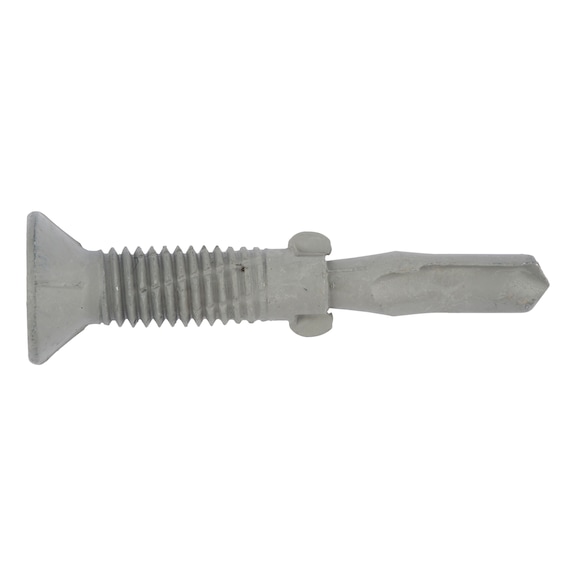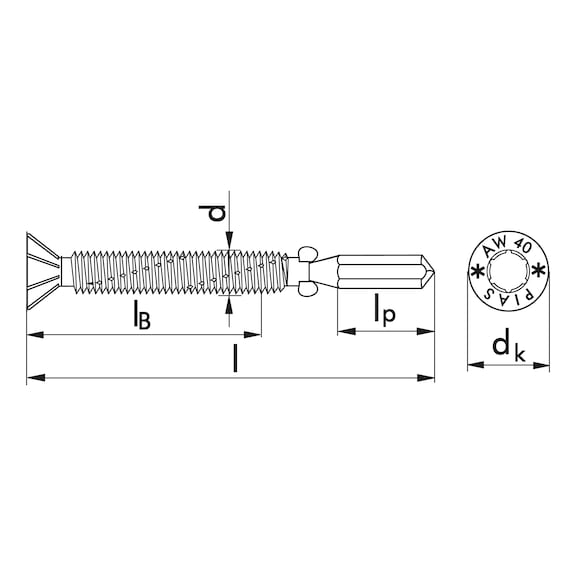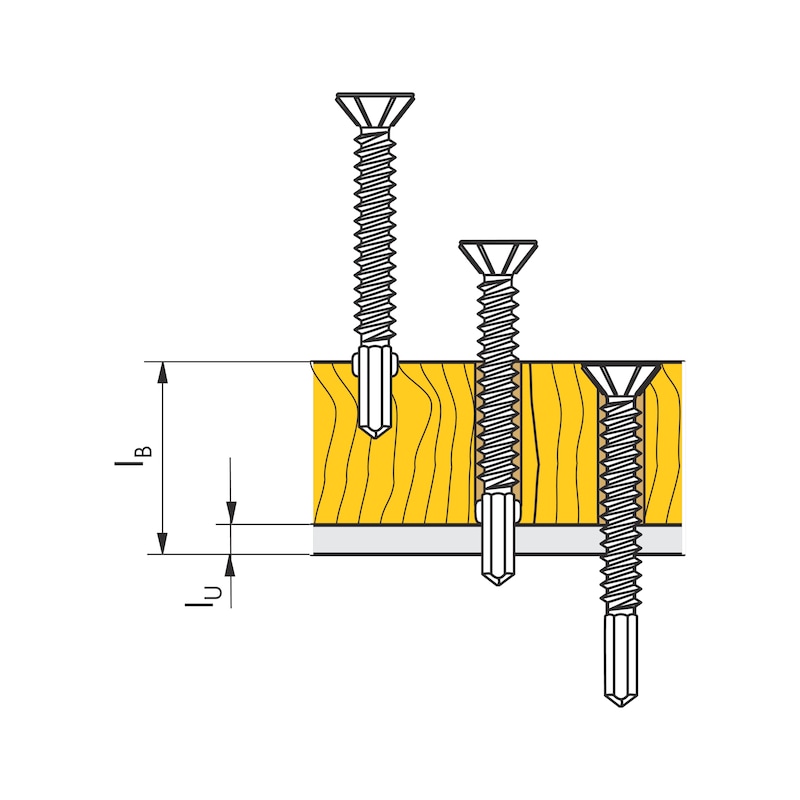For detailed information, other images and documents, please select individual articles from the following table.
pias® wing-type drilling screw, countersunk milling head with AW drive
The self-drilling screw with up to 50% time savings when fastening wood to metal sub-structures
Register now and access more than 125,000 products

Variants
Steel, Ruspert®-coated (grey)
Corrosion protection
Approx. 500 hrs. no base metal corrosion in accordance with DIN EN ISO 9227 — NSS
AW drive system:
- Enhanced torque transmission
- Longer life
- Optimum centring
- Better mounting output thanks to fatigue-free screwing in; the required contact pressure for transmission of the torques is considerably lower
- Largest possible contact surface of bit in screw drive
- Even force distribution prevents damage to the surface-protection coating and therefore ensures better resistance to corrosion
- Wing-pias screws must be appropriately tested for usability for each application case. Only install using application tools with a depth stop and claw coupling.
- The maximum attachment length is calculated as follows: Wood thickness and surface thickness lU = max. attachment length
- Drilling screws must be processed with a suitable drill driver (e.g. cordless drill driver with depth stop)
- The use of impact screwdrivers is not permitted
- Drilling screws must be attached perpendicular to the surface of the component
Drilling screws may only be used where dampness is not to be expected. For connection elements with a construction permit, the permit, and in particular Part 2 "Special regulations", must always be observed.
For use with hard and soft woods
- Force feeding of the screw is prevented by the wings drilling out the wood
- The core hole is drilled into the substructure. The wings break off upon contact with the metal
- The first few turns of the screw cut the thread, the remainder of the screw then screws into the thread
Select RAL-colour code
!! NOTE: On-screen visualisation of the colour differs from real colour shade!!










